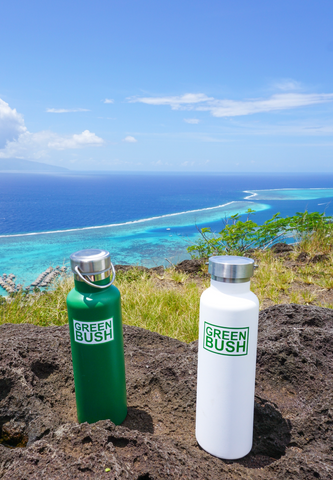Our priorities

At Greenbush, we believe in an approach that integrates the needs of our planet, our body and our society. We attach great importance to environmental protection, aware that every action counts in preserving our beautiful Earth. Health is also at the heart of our concerns, because we know that well-being requires natural and healthy products. Finally, we are actively engaged on a social level, promoting employment and reintegration, because we believe in a responsible economy that benefits everyone.
Protection of the Environment and Oceans
Greenbush products are made in France to Reduce Environmental Impact
Manufacturing a product in France is much more than a simple “Made in France” label. It embodies a concrete commitment to protecting the environment. The advantages of this approach are multiple and contribute significantly to reducing the carbon footprint.
When you choose a product made in France, you are opting for responsible consumption. Transporting these products over short distances involves fewer transport-related CO2 emissions. This means that these products will have traveled fewer kilometers before reaching your hands, thereby reducing the final carbon footprint of the good. This is an essential gesture for the preservation of our environment.
Discover Our Products Made in France
At Greenbush, we highlight our range of products made in France, which combines quality, environmental responsibility, and support for the national industry. We invite you to explore our collection of French products and make the choice of sustainability. Opting for “Made in France” is a first step towards a greener future.
Commitment to Ocean Protection
The oceans are treasures of our planet, playing a vital role in the production of oxygen and the absorption of CO2. They are responsible for generating 50% of the oxygen we breathe, thanks to photosynthesis carried out by phytoplankton. In addition, the oceans act as real "carbon pumps", absorbing around 30% of global CO2 emissions, thus contributing significantly to the fight against climate change.
At Greenbush, we understand the critical importance of the oceans. We are actively engaged in concrete actions aimed at protecting these fragile marine ecosystems. Our goal is to raise awareness in our community of the importance of ocean preservation and to act accordingly.
We support initiatives to clean beaches, reduce the use of plastic and protect corals. We participate in projects to raise awareness of the importance of the oceans and collaborate with organizations dedicated to marine conservation. At Greenbush, we believe that together we can help protect our oceans for future generations.
Health and Well-being, UV Protection
Quality Products and Natural Ingredients
At Greenbush, our priority is to offer you the highest quality products, specially designed to improve your health and well-being. Our products embody our commitment to health, highlighting natural and organic ingredients that make a difference.
Quality is at the heart of our approach. At Greenbush, we believe that the quality of the products you use has a direct impact on your health. This is why we strive to offer you products that meet the highest standards of quality. Our commitment to excellence is reflected in every product we produce.
We pride ourselves on using only natural and organic ingredients. The benefits of these ingredients for your health are invaluable. We believe in the purity of the elements that nature offers us, and we ensure that they are at the heart of our products. This means you don't have to worry about chemicals or harmful substances. We believe in the power of nature to nourish and protect your health.
Protection against UV Hazards
Protection from ultraviolet (UV) rays is essential for maintaining healthy skin and preventing risks associated with sun exposure. Understanding the dangers of UV and knowing how to protect yourself from it is fundamental to your health.
UV rays emitted by the sun can cause significant damage to your skin. Excessive sun exposure can lead to sunburn, premature aging of the skin and increase the risk of skin cancer. It is therefore imperative to protect yourself, especially when spending time outdoors.
It is essential to understand the different forms of UV. UVA penetrates deep into the skin and is responsible for photoaging. UVB, on the other hand, affects the superficial layers of the skin and can cause sunburn. UVC is fortunately stopped by the ozone layer.
We offer you advice on how to protect yourself from UV rays effectively. The use of sun protection products is fundamental. Opt for quality sunscreens, like those we offer at Greenbush. Additionally, avoid direct exposure to the sun during the hottest hours of the day, wear protective clothing, and do not underestimate the importance of eye protection.
We have dedicated several articles in our blog concerning the dangers of UV and a complete guide to choosing sun protection adapted to your skin type and your destination.

Social engagement
At Greenbush, our commitment is not limited to the quality of our products. We also strive to play an active role in our community and promote solidarity and social responsibility.
We believe in the importance of integration and professional reintegration. This is why we collaborate with an ESAT (Work Service and Assistance Establishment) located nearby. The FaCylities Multi Services (FMS) company is an example of social responsibility, operating in five different business sectors, including logistics.
Solidarity and responsibility are essential values that guide our actions. We believe that every company has a role to play in society, beyond its products or services. Solidarity is the foundation of professional reintegration, and responsibility is at the heart of our commitment to our partners and our community.
A concrete example of our social commitment is our partnership with FMS. This collaboration has enabled the professional reintegration of many people and contributed to the success of this adapted company. Our partnership is based on the values of solidarity, responsibility and adaptability, which are essential to building a more inclusive society.
Fight against Excess Plastic: Greenbush Insulated Water Bottles
Excessive plastic production has become a major global problem. Every year, millions of tonnes of plastic end up in our oceans, causing serious damage to marine wildlife and ecosystems. At Greenbush, we are aware of the impact of plastic on our planet and are committed to reducing its use.
We have taken steps to encourage our customers to adopt a more environmentally friendly lifestyle. One of these measures is to offer Greenbush insulated water bottles. Our water bottles are made from high-quality, durable materials, providing an eco-friendly alternative to disposable plastic bottles.
Our insulated water bottles are designed to keep hot or cold drinks at the desired temperature, making them ideal for everyday use. Plus, they are reusable, helping to reduce the demand for single-use plastic bottles. By using our bottles, you actively participate in reducing plastic pollution.


" Au fil des années, j’ai pu observer les plages et les eaux dévastées par la pollution, mais également rencontrer les populations directement touchées par ce fléau, ce à quoi s’ajoutent aujourd’hui les problèmes du réchauffement climatique et de la montée des eaux.
Il est vite devenu impossible de prendre le même plaisir dans l’eau alors que chaque plage ou presque est un cri d’alarme de l’océan.
Le déclic fut lors d'un voyage, en surfant Greenbush aux îles Mentawai, une totale prise de conscience face à ce paradoxe : tant de beauté détruite.

Il fallait agir, réagir, être acteur d’un progrès, créer un projet avec un fil « vert » et trois priorités : Environnement, Santé, Protection.
C’est dans ce contexte que la marque Greenbush est née.
Nous avons créé une ligne de soins solaires sans filtres chimiques, produits naturels et minéraux qui ne détruisent pas les océans, les coraux en particulier ; puis des bouteilles en acier inoxydable pour stopper cette surconsommation de bouteilles plastiques qui s’amoncellent sur les plages et dans les océans."
Hervé, fondateur de Greenbush.

